Make The Perfect Machine Binding
Before I go bragging about this method I came up with after many, many miserable puff quilt binding experiences, I know I just have to say this:
If you are a ‘real’ quilter, an ‘authentic’ quilter, you will probably scoff at me. It seems like all quilters insist on hand stitching the binding to the back. They will usually machine-stitch it on the front but then hand stitch it to the back. When I first started getting into quilting, the whole ‘hand-stitching’ thing really turned me off. Me no likey hand stitching. It hurts my fingers, I have actually chipped a tooth from pulling a needle through, the quilt sitting on me makes me hot, it takes forever, and I just plain hate it.
So anytime I can find a way to sew something on the machine, I will do it. And binding a puff quilt on a machine is hard. And sewing the binding to the back is pretty much nearly impossible to do perfectly. I’m sure that all of you who have made a puff quilt with my tutorial are nodding in agreement.
Well this summer I sewed 10 puff quilts in two weeks and it was imperative to find a way to do a perfect binding using the machine. And I did it, folks. But it doesn’t mean you can’t see the seam. You can. But it is straight and pretty. So that, to me, is perfect.
This is a tutorial. To see the rest, follow the jump!
Step 1: The first part is to make the binding and iron it like bias tape. When I usually make binding, I iron it in half lengthwise and call it good. But with the new method, I iron it in half and then iron one side up and the other side back down in a tri-fold.
Fold and iron it up…
And then iron it back down on top like bias tape.
Step 2: Use your walking foot (you can probably get away without one if you are doing a regular quilt this way but I highly recommend the walking foot for puff quilts.) The top thread should be the color of the binding and the bottom should be the color of the back of the quilt. In this case, light blue and brown.
Step 3: Unfold your ‘bias’ binding tape and work it so that the raw edge is lined up with the edge of the quilt, and so that the folds of the binding are unfolded and open to you (I hope that makes sense.) You want it so that when you fold it over, the binding will naturally fold over to the back because of how you ironed it. Leave a tail of a few inches and then start sewing in the ditch of the first fold. Keep the raw edges lined up and continue sewing in the crease the whole time.
Sew the binding onto the top in the traditional way, mitering the corners. My pictures of this process were awful so I am going to refer you to this tutorial on binding from Lella Boutique, she does a great job explaining it.
Step 4: One you’ve sewn the binding completely to the top, flip over your quilt. My puff quilt here has a brown minky back. Note the seam that you just sewed. This will be your guide for putting the binding onto the back. Now take scissors and trim the edge of the quilt so that there is about a 1/2 inch or so between the edge of the quilt and that seam. Be careful to NOT cut your binding anywhere near the fold! (It’s okay to cut the raw edge)
Step 5: Bring your binding over to the back. You will be lining up the fold of the binding with the guide seam. This is why it is important to have an even trim around the whole quilt. If you have a pretty uneven trim (like if it’s 1″ in some spots and 2″ in others) then it won’t work. But since you sewed the binding on following that crease, that shouldn’t really be an issue. It’s still good to trim though.
I fold the binding up. See how I’m lining it up here? You can’t really see the seam anymore because the edge of the binding (the fold of the binding) is meeting up to the seam or slightly covering it.
Step 6: FIRST change your thread so that the bobbin is the same color as the top!! To sew the back of the binding on, I put my needle on the left setting and line up the edge of the binding with the inside edge of the walking foot. Study the picture carefully to see where my foot is because this is essential. Then I slowly start sewing. I do not bother pinning because I feel like pinning actually makes the process less precise. I go slowly and stop very frequently to let my fingers match the edge up to that seam. And I check the front to make sure it’s looking right. After doing this a little while you will get faster and it still goes much faster than hand-stitching.
Step 7: To do the corners, I usually just sew to the end and stop. I have clipped the quilt corner to reduce bulk. I take the quilt out completely, fold down the corner how I like, then continue sewing. I’ll clip all my threads at the end.
Step 7: This is how the back looks when I’m done! It may be visible, but dang it that is a near-perfectly straight line. And for all of you who have bound puff quilts, you will understand how hard it is to do that. The bulk makes a significant different in the level of difficulty.
And this is how it looks from the top. Yes, yes, you can see the stitch. And ‘real’ quilters will condemn me for that, I’m sure. But I think it looks nice and straight and secure. And when you have a baby quilt that’s going to be washed and worn out a million times, don’t you want it nice and secure?
Linking up to:
Blue Cricket Design
Somewhat Simple
House of Hepworths
Fireflies and Jellybeans
Flamingo Toes Think Pink Sunday
Tatertots and Jello

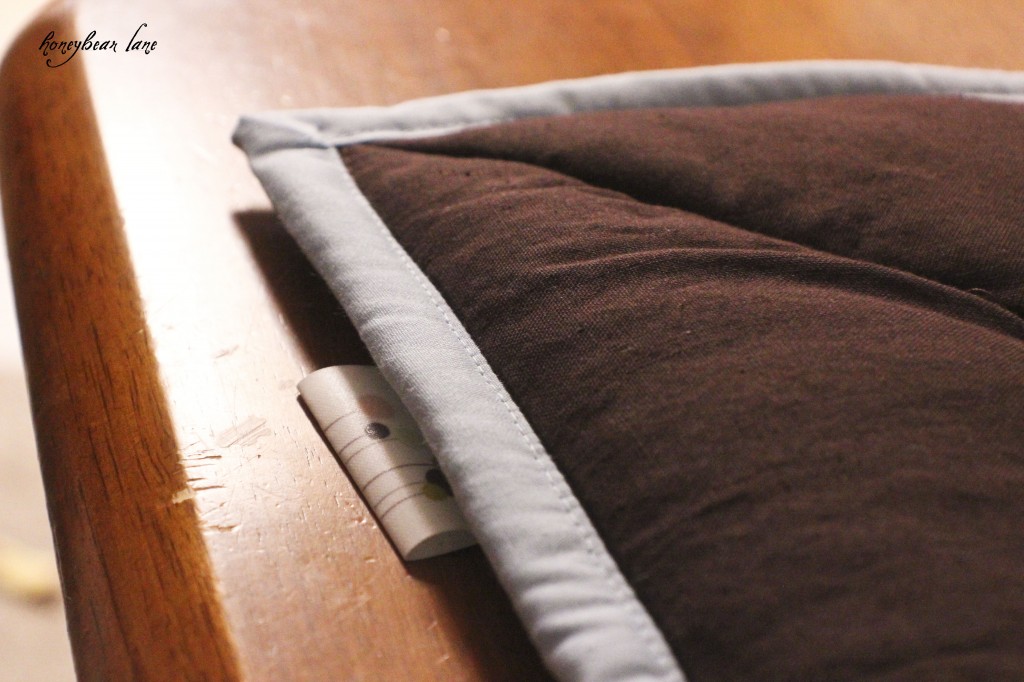
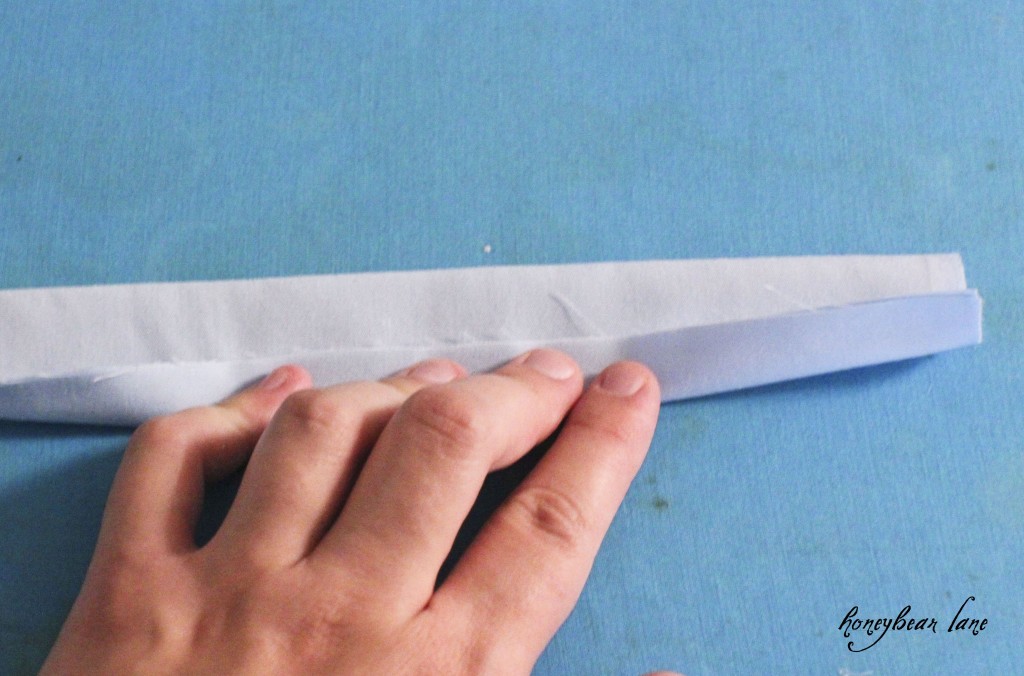
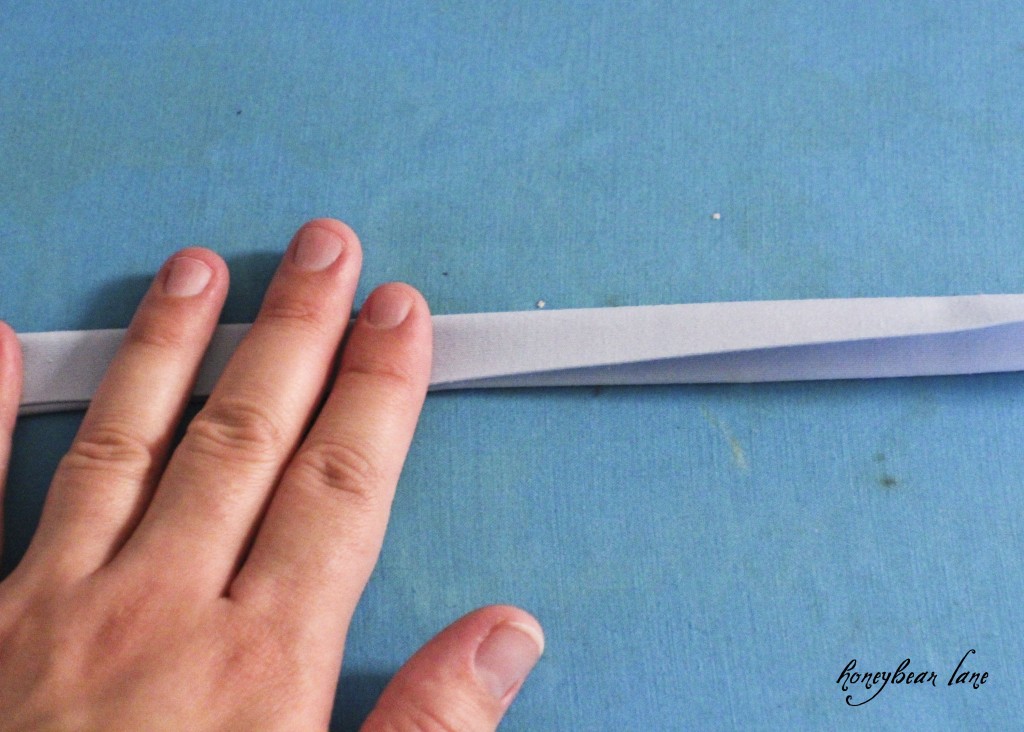
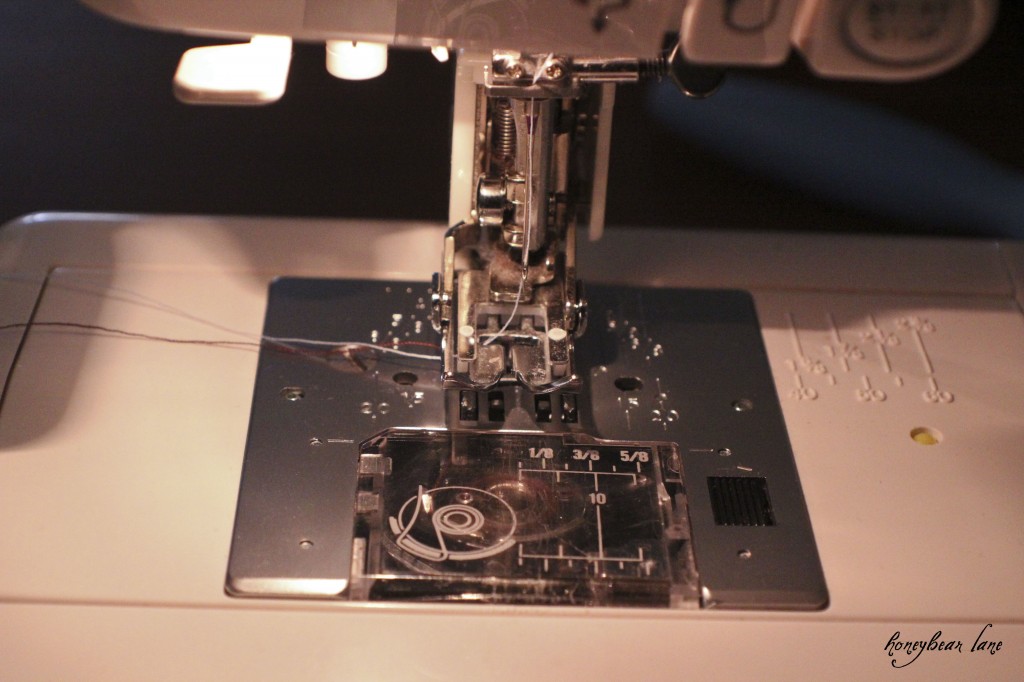
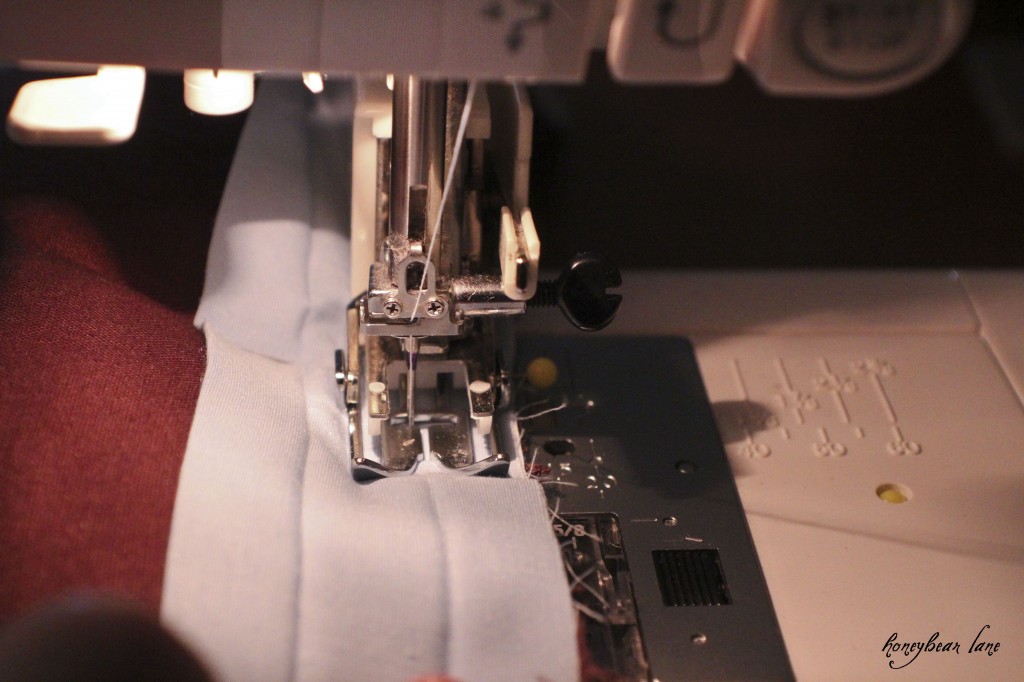
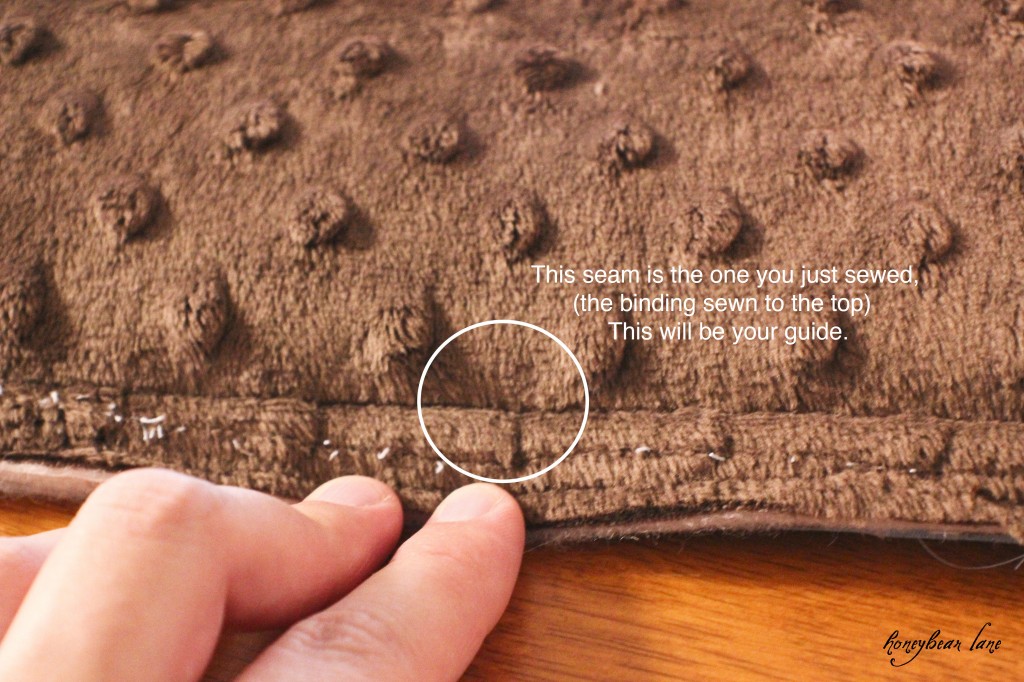
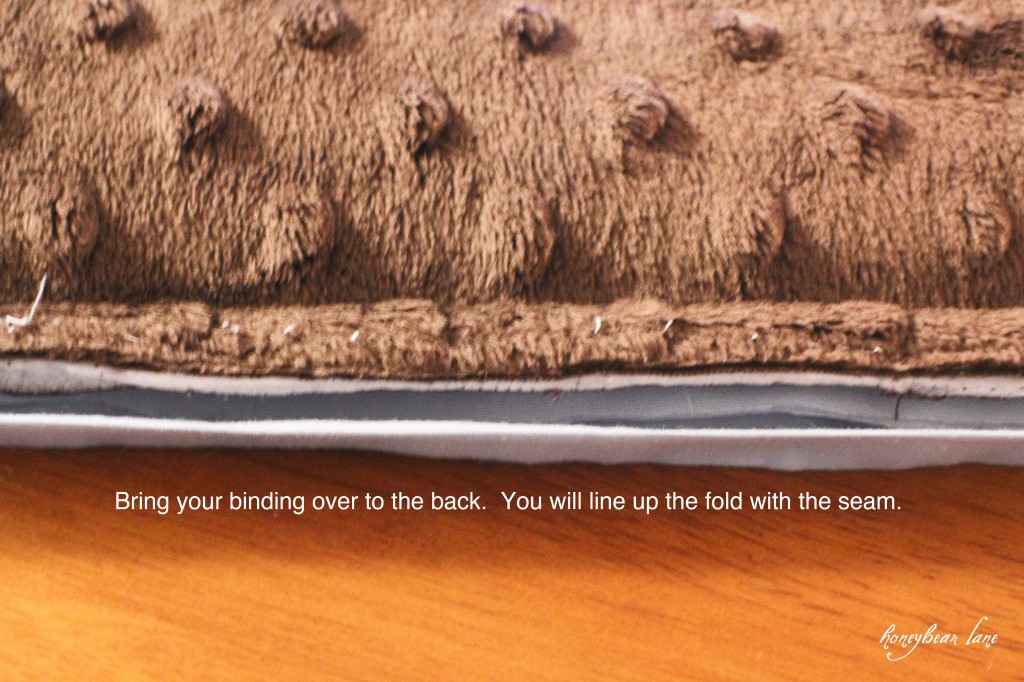
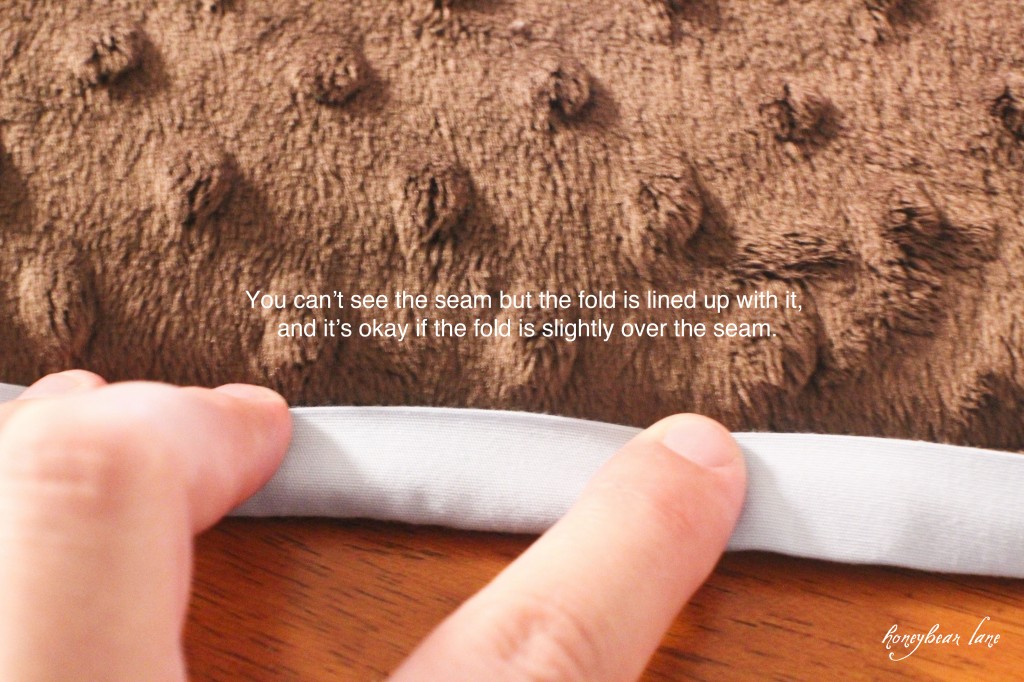
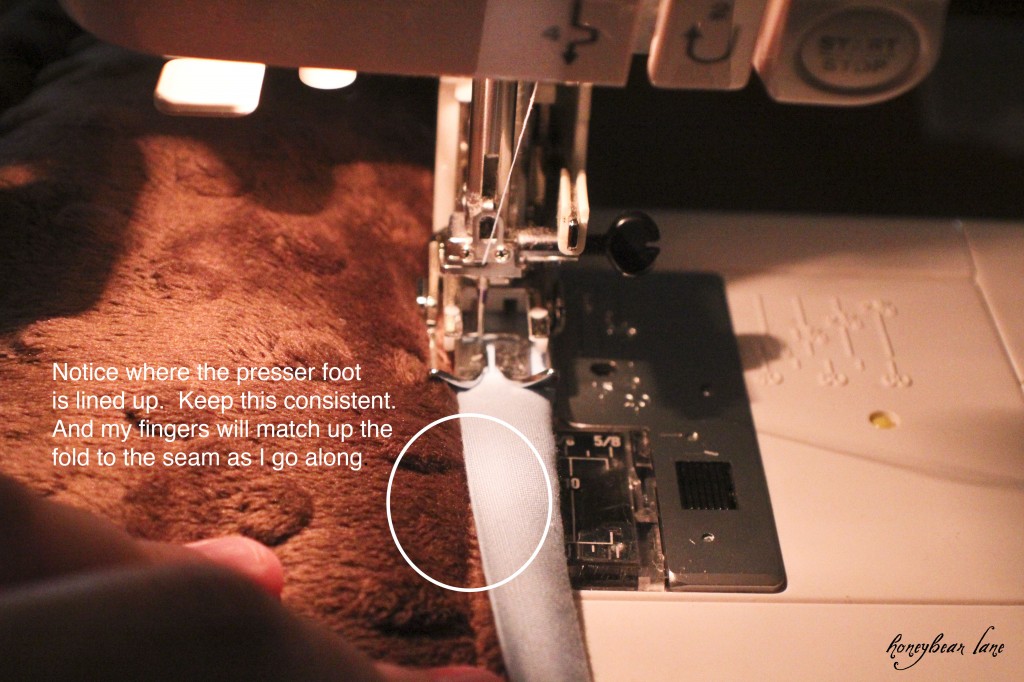
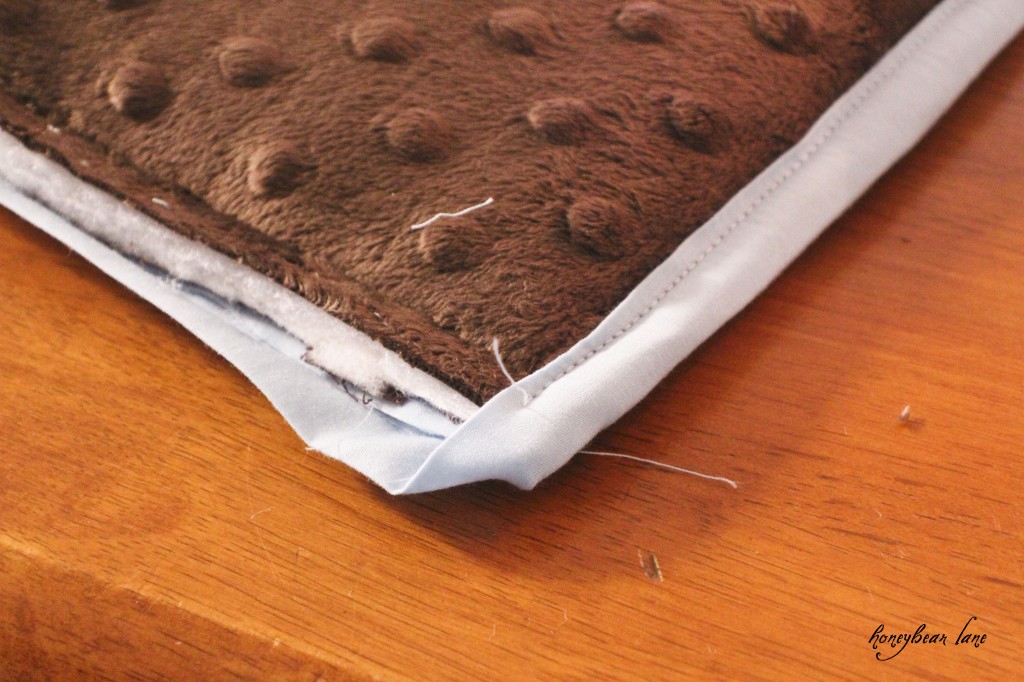
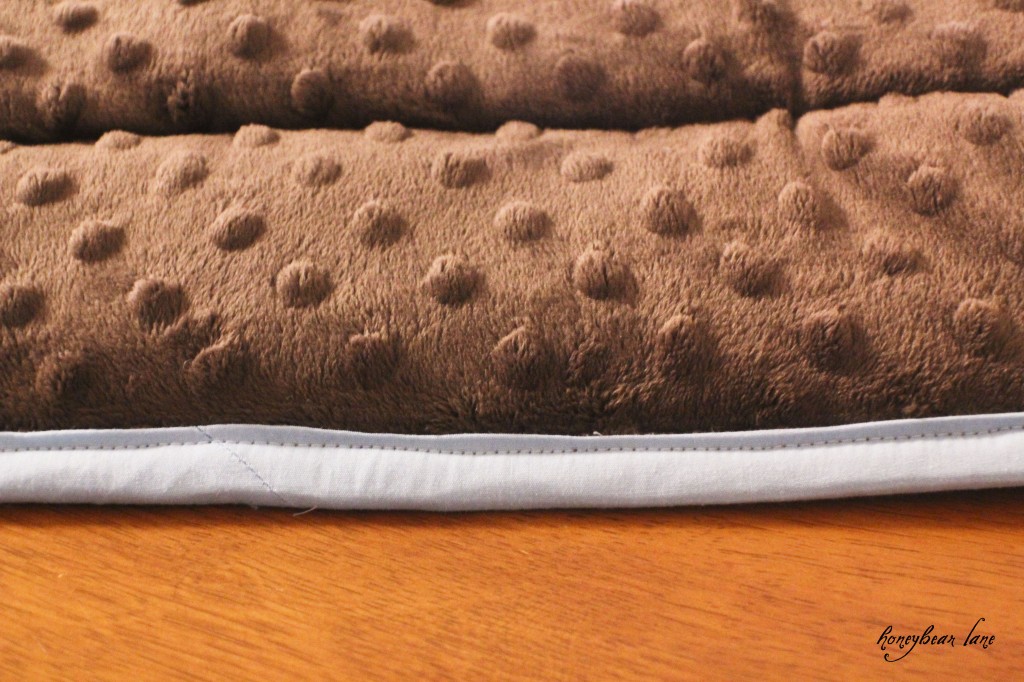
LOVE!!! Pinned it for reference, thanks for sharing!
Thanks for pinning!
I can’t imagine making 10 puff quilts in two weeks, with two children at home and being pregnant. I made two this summer for a friend that had twins and it was hard work (and I’m pregnant too). I tried sewing the binding with my machine but I couldn’t get it lined up just right and in the end frustration won out and I ended up hand-sewing it. It took forever but with the aid of my thumble (I love it) I didn’t stab my fingers too many times and it gave me a chance to sit on the comfy sofa instead of my crappy sewing chair. I might have to try your new tutorial with my next quilt. I am actually planning to make a puff quilt for my son’s twin bed; I have all the fabric cut and I’ve sewed about 12 of my 156 puffs. I had to take a break to actually get stuff ready for the new baby though. I need to get a blog post together about the two puff quilts I did make because I love them. Your tutorial was soooo easy to follow and everyone has loved the finished product.
Thanks! I would love to see your puff quilts you made! (And yes I did make 10 puff quilts but I did have some help.) It was still a lot of work though!
Ay-yi-yi. I did the same, but skipped the trimming after sewing the front on and stopping at the corners. My binding did NOT turn out perfect (and it wasn’t even a puff quilt, just a regular one that I needed to get DONE because I was sick of seeing it). I will take the time next time. 🙂
And there seems to be a lot of quilters that I read who are doing machine binding. There’s lots of tutorials popping up for it, anyway. 🙂
Yes I learned that doing an even trimming all around is essential to getting an even binding that looks straight from the front!
Wow, thank you so much! I am probably going to make the puff quilt next month and I will definitely be referring to this when I do. I’m going to pin it, too. I’m with you about hand-stitching… I’ve read a lot of quilting blogs where they do that, but I haven’t even tried it because I’m just not interested in taking the time for that. I’d rather have it be less than perfect and spend a fraction of the time so I can move on to other projects!
Wow GREAT post, I bought your tutorial a while ago, I haven’t started the quilt yet but any advice will help so thanx!!!! I’m pretty positive I’m not even qualified to try sewing something that advanced yet but I will try because I LOVE your puff quilts, so thanx again for the tip!
Natalie
http://www.projectdowhatyoulove.wordpress.com
Thank you for the printables! I need to start acquiring decorations and this is a great place to start. And yes, machine binding is official. It has to be. Sewing by hard is just so hard.
I hate hand stitching too. I quit hand binding soon after I started it. My machine binding is getting better, but it is never perfect. I am going to try doing it like you did yours. I am not clear on how you tri-folded your binding. You folded it in half, then folded that into trifolds? One fold going up and one going down or both going down? I folded paper-first in half then trifold with one on top of the other. I think that is what you did. It seems like that will work.
Thanks for giving me another method to try. Your binding looks great. I think the hand sewn binding is only a requirement for show quilts that don’t get any use!
Pam–I think what you did with the paper sounds right! Good luck!
THANK you so much for this. I hate the wobbly horrible binding I always get. I’ll be giving this a go on the puff quilt I am currently working on.
Yes, I hate that too and for so long I couldn’t figure out how to get it straight! Good luck!
I’ve never actually made a quilt before, much less bound one, but this looks way easier to tackle than trying to hand stitch it! The thought terrifies me. Thanks for this! I pinned it for safe keeping!
Thanks for the pin! Good luck!
thanks! this looks great!I was wondering did you use the same 4in width for the bias tape with this method?
Good point, I totally forgot to mention that I have reduced my binding width to 3.5 inches. But you can still do it with 4″, it’s just a bit bigger.
Nice tutorial! Not only am I stumbling this, I’m pinning as well. ;-D Thanks for sharing.
Thanks so much Brittany! I love your site!
great how-to- and one I really needed! I’ve been so scared of biased tape!
I just came across this heavenly tutorial and I am stoked to make another quilt because this method looks a bajillion times better than what I have done in the past (fold over the backing and sew). I haven’t made a quilt in awhile because I absolutely HATE binding but this looks absolutely wonderful. THANK YOU!!!
I sew LOTS of quilts for Project Linus and my friends and I decided long ago that we were NOT hand-sewing binding!! Our method is similar to yours BUT…we sew the binding on to the BACK of the quilt first, then wrap it to the front and sew it on with a zigzag or other decorative stitch. It looks VERY pretty on the front…and pretty darn good on the back, also! Give it a try – I think you’ll like it!
Sounds cool, I’ll have to check it out!
Just what I was looking for…made 2 puff quilts so want to bind teedge of one just had no idea how….now I noe..great tutorial thanks a million 🙂
I’m not sure if you are still active in this site but I was wondering where you bought the fabric in the photo on the puff quilt ( brown) my daughter lives this material and I would live to buy her/ have one made in a cream colour for her twin bed. This fabric called ” minky” is popular in tween sports clothes but I have never see fabric for sale. Quiet honestly I have not looked very hard either. I am creative but not crafty. 🙂 great site!
Some of it is from the Will & Lily Moda collection which is discontinued now and others are from Hobby Lobby.
I am grateful for your tutorial! A newbie quilter at an advanced age, I don’t feel like answering to “quilt police” nor do I have time to learn all the rules. I want to get quilts done for great-grands to enjoy right now – and will need washing over and over again. This helps.
Haha! I promise not to report you to the quilt police. I’m sure I’ve committed countless infractions of my own!